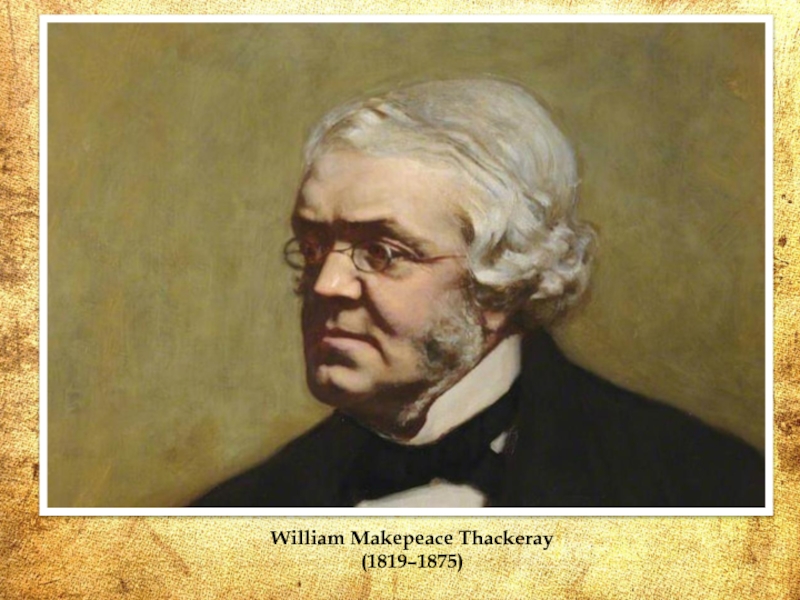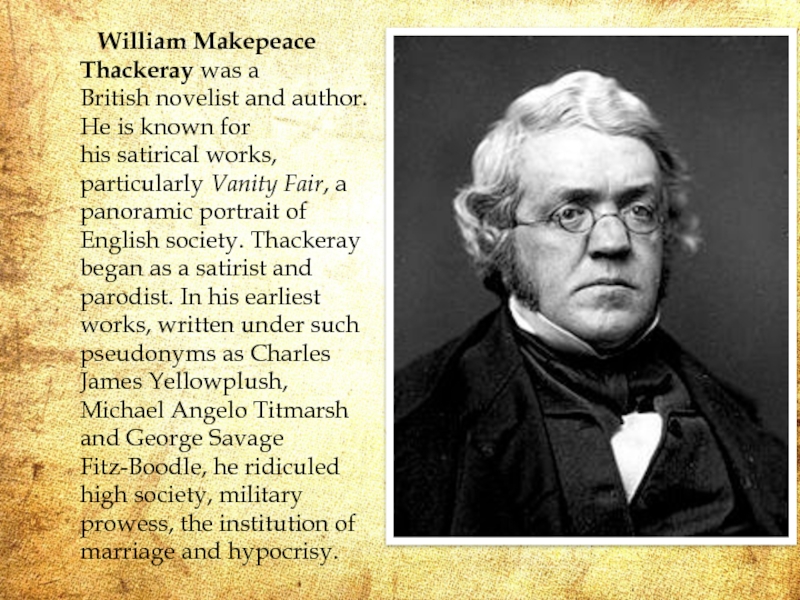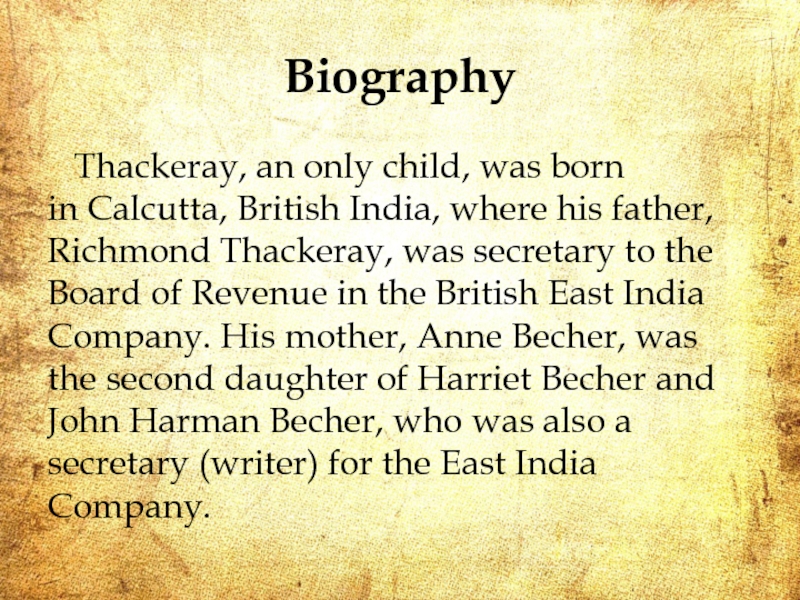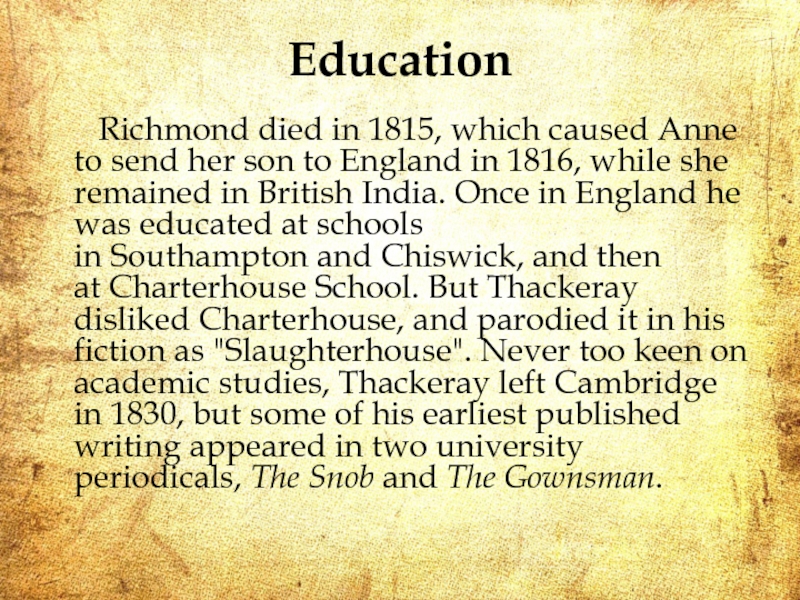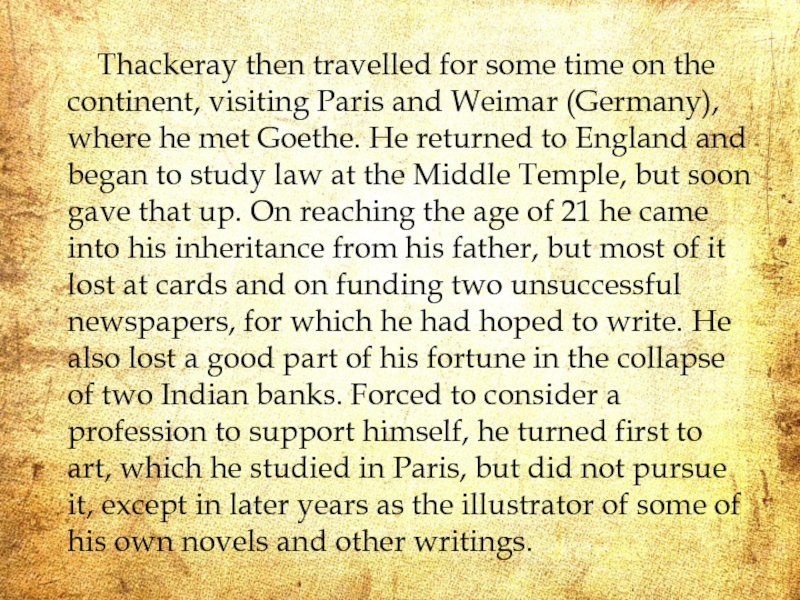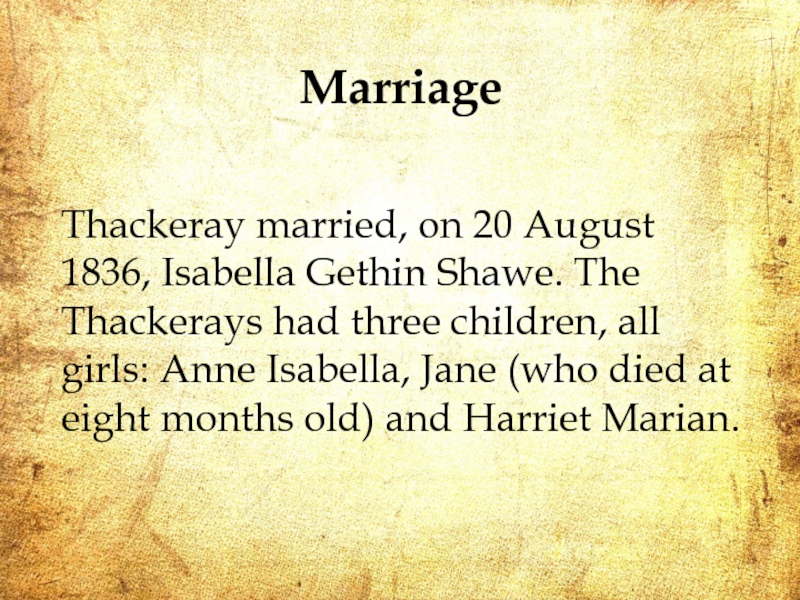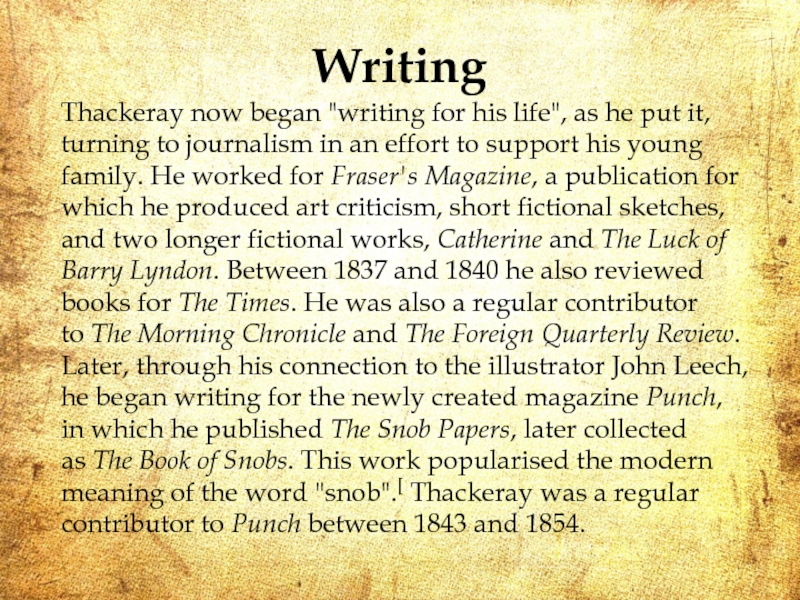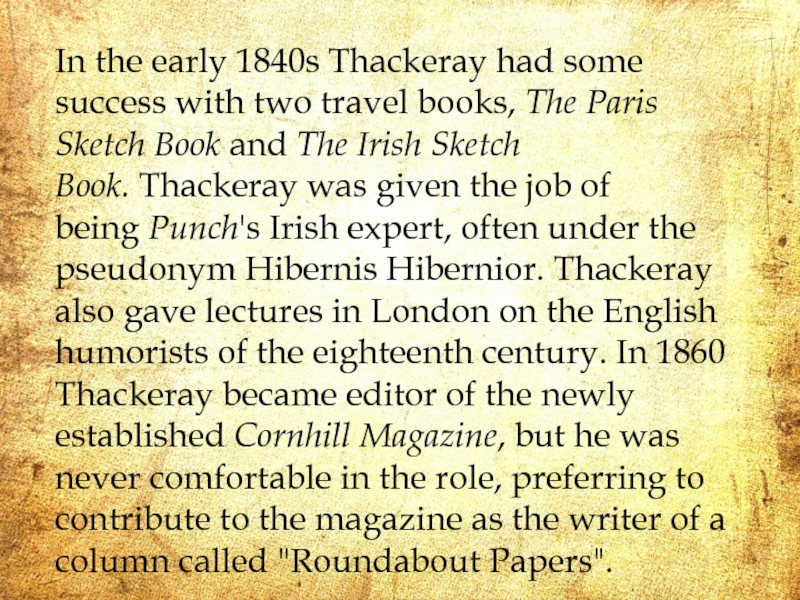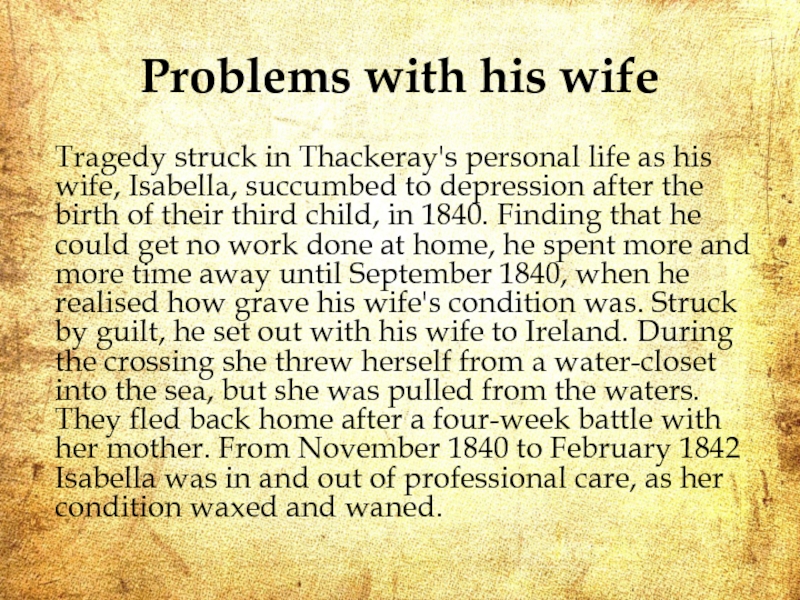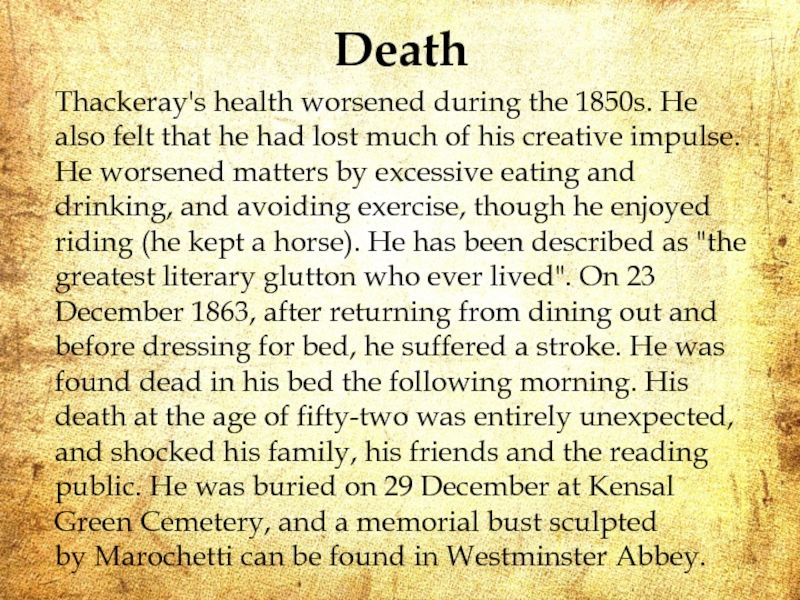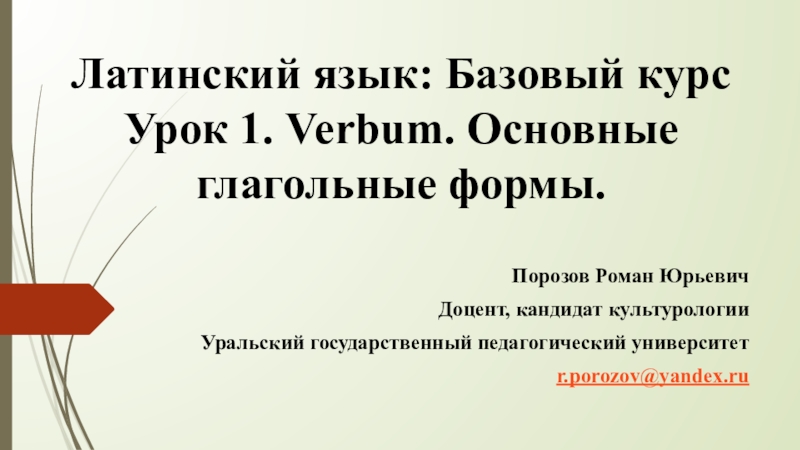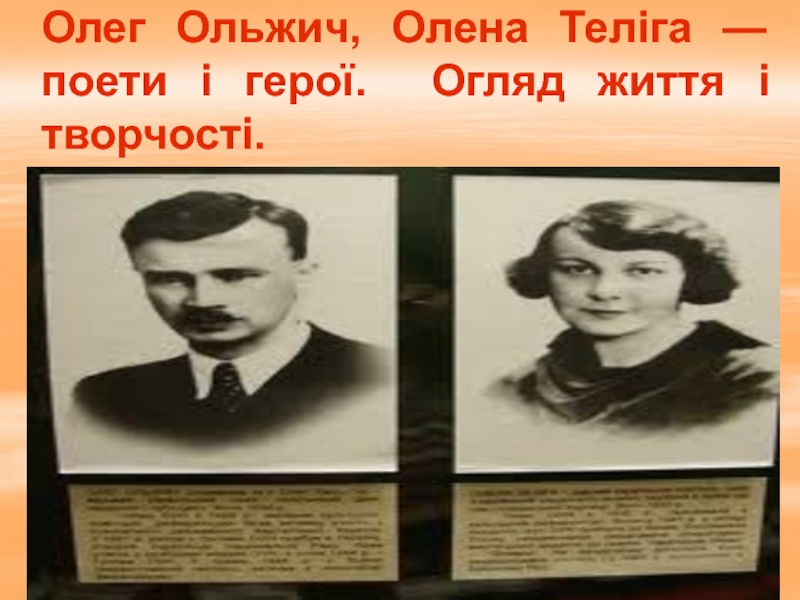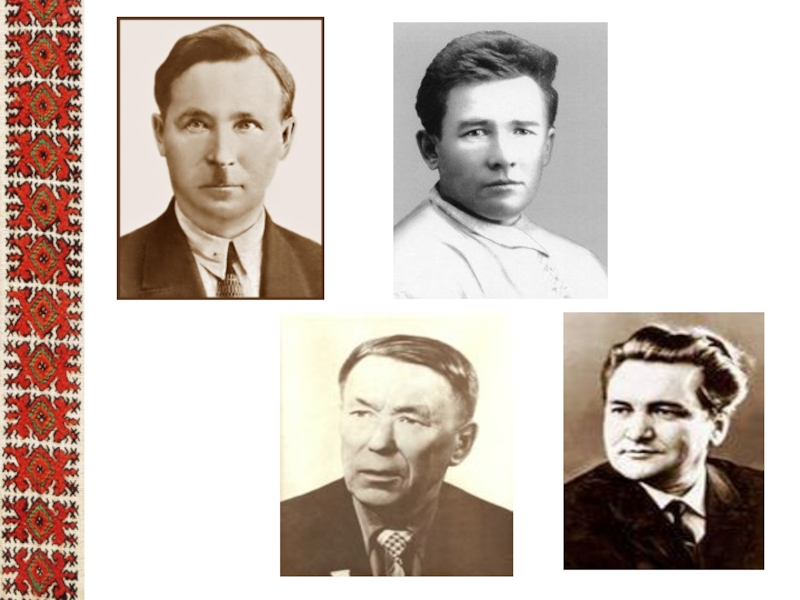Слайд 1William Makepeace Thackeray
(1819–1875)
Слайд 2 William Makepeace Thackeray was a British novelist and author. He
is known for his satirical works, particularly Vanity Fair, a panoramic portrait of
English society. Thackeray began as a satirist and parodist. In his earliest works, written under such pseudonyms as Charles James Yellowplush, Michael Angelo Titmarsh and George Savage Fitz-Boodle, he ridiculed high society, military prowess, the institution of marriage and hypocrisy.
Слайд 3Biography
Thackeray, an only child, was born in Calcutta, British India,
where his father, Richmond Thackeray, was secretary to the Board
of Revenue in the British East India Company. His mother, Anne Becher, was the second daughter of Harriet Becher and John Harman Becher, who was also a secretary (writer) for the East India Company.
Слайд 4Education
Richmond died in 1815, which caused Anne to
send her son to England in 1816, while she remained
in British India. Once in England he was educated at schools in Southampton and Chiswick, and then at Charterhouse School. But Thackeray disliked Charterhouse, and parodied it in his fiction as "Slaughterhouse". Never too keen on academic studies, Thackeray left Cambridge in 1830, but some of his earliest published writing appeared in two university periodicals, The Snob and The Gownsman.
Слайд 5 Thackeray then travelled for some time on the
continent, visiting Paris and Weimar (Germany), where he met Goethe. He returned
to England and began to study law at the Middle Temple, but soon gave that up. On reaching the age of 21 he came into his inheritance from his father, but most of it lost at cards and on funding two unsuccessful newspapers, for which he had hoped to write. He also lost a good part of his fortune in the collapse of two Indian banks. Forced to consider a profession to support himself, he turned first to art, which he studied in Paris, but did not pursue it, except in later years as the illustrator of some of his own novels and other writings.
Слайд 6Marriage
Thackeray married, on 20 August 1836, Isabella Gethin Shawe. The
Thackerays had three children, all girls: Anne Isabella, Jane (who died
at eight months old) and Harriet Marian.
Слайд 7Writing
Thackeray now began "writing for his life", as he put
it, turning to journalism in an effort to support his
young family. He worked for Fraser's Magazine, a publication for which he produced art criticism, short fictional sketches, and two longer fictional works, Catherine and The Luck of Barry Lyndon. Between 1837 and 1840 he also reviewed books for The Times. He was also a regular contributor to The Morning Chronicle and The Foreign Quarterly Review. Later, through his connection to the illustrator John Leech, he began writing for the newly created magazine Punch, in which he published The Snob Papers, later collected as The Book of Snobs. This work popularised the modern meaning of the word "snob".[ Thackeray was a regular contributor to Punch between 1843 and 1854.
Слайд 8In the early 1840s Thackeray had some success with two
travel books, The Paris Sketch Book and The Irish Sketch Book. Thackeray was given
the job of being Punch's Irish expert, often under the pseudonym Hibernis Hibernior. Thackeray also gave lectures in London on the English humorists of the eighteenth century. In 1860 Thackeray became editor of the newly established Cornhill Magazine, but he was never comfortable in the role, preferring to contribute to the magazine as the writer of a column called "Roundabout Papers".
Слайд 9Problems with his wife
Tragedy struck in Thackeray's personal life as
his wife, Isabella, succumbed to depression after the birth of
their third child, in 1840. Finding that he could get no work done at home, he spent more and more time away until September 1840, when he realised how grave his wife's condition was. Struck by guilt, he set out with his wife to Ireland. During the crossing she threw herself from a water-closet into the sea, but she was pulled from the waters. They fled back home after a four-week battle with her mother. From November 1840 to February 1842 Isabella was in and out of professional care, as her condition waxed and waned.
Слайд 10Death
Thackeray's health worsened during the 1850s. He also felt that
he had lost much of his creative impulse. He worsened
matters by excessive eating and drinking, and avoiding exercise, though he enjoyed riding (he kept a horse). He has been described as "the greatest literary glutton who ever lived". On 23 December 1863, after returning from dining out and before dressing for bed, he suffered a stroke. He was found dead in his bed the following morning. His death at the age of fifty-two was entirely unexpected, and shocked his family, his friends and the reading public. He was buried on 29 December at Kensal Green Cemetery, and a memorial bust sculpted by Marochetti can be found in Westminster Abbey.
